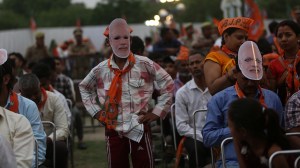- India
- International
Amid worsening pollution levels, Centre and Delhi govt spar over stubble burning
Union Environment Minister Prakash Javadekar Thursday said the contribution of emissions from farm fires in neighbouring states to Delhi's air quality, at present, was only 4% and the remaining was from local sources: "On one side there is stubble burning, on the other side waste is burned by both people and sometimes karamcharis.
 An airshed, in geography, is defined as a region in which the atmosphere shares common features with respect to dispersion of pollutants; in other words, a region sharing a common flow of air.
An airshed, in geography, is defined as a region in which the atmosphere shares common features with respect to dispersion of pollutants; in other words, a region sharing a common flow of air.As Delhi’s average air quality index (AQI) slipped into the ‘very poor’ category for the first time this season, with a reading of 312, the Centre and Delhi government Thursday sparred over the contribution of stubble burning to rising air pollution levels in the national capital. Union Environment Minister Prakash Javadekar Thursday said the contribution of emissions from farm fires in neighbouring states to Delhi’s air quality, at present, was only 4% and the remaining was from local sources: “On one side there is stubble burning, on the other side waste is burned by both people and sometimes karamcharis. There’s suspension of dust. In today’s pollution level, 4-5% share is from stubble burning but rest 95% is from local factors – we have to work to reduce these local factors.”
Delhi Chief Minister Arvind Kejriwal took to Twitter to challenge the minister on stubble burning’s impact on Delhi. “Staying in denial will not help. If stubble burning causes only 4% pollution, then why has pollution suddenly increased since last fortnight? Air was clean before that. Same story every year. There is no massive jump in any local source of pollution in last few days to cause this spike,” he said.
Kejriwal added, “Let’s accept that stubble burning causes huge pollution every year in North India during this time. And let’s all together find a solution sincerely… I am extremely worried that pollution will play havoc coupled with coronavirus.”
To which Javadekar responded in a tweet that his “statement on air pollution has been misinterpreted by a section of the media”.
“Let me clarify, the figures of 4% share of stubble burning in AQI in Delhi pertained to this week. It varies from 4% to 40% during peak stubble burning. At the same time, let us not be in denial that there are several local factors – vehicular pollution, non-agricultural biomass burning, dust, geographical and metrological – that are primarily responsible for high air pollution during winters in Delhi,” he said.

Javadekar was addressing 50 teams of the Central Pollution Control Board (CPCB) that will begin inspecting areas in Delhi-NCR to check sources of emissions and co-ordinate with agencies responsible for controlling them. “I appeal to the Punjab government again that they immediately ensure there is less stubble burning. It impacts the health of people in their state as well,” he said.
Later, the Environment Ministry also tweeted that share of stubble burning changes every day. “Last year, between October 8 and December 9, the share of stubble burning in air pollution in Delhi, as per SAFAR data, was greater than 15% on six days, while on a single day it was greater than 40%,” it said.
On Thursday, contribution of farm fires to PM 2.5 rose to 6% – up from 3% on Tuesday and 1% on Wednesday – as per data from the Centre’s SAFAR air quality and weather forecasting system.
The coming days
As per a forecast from the India Meteorological Department, wind direction over Delhi at present has changed to east-south east and is expected to remain in this direction until at least October 18. This means emissions from stubble burning, which is happening in north-west of the country, will not enter Delhi unless winds start blowing from the north-west direction.
However, wind speed continues to remain low during day time and almost zero at night, because of which pollutants from local and external sources that have entered Delhi’s air will not be easily dispersed, said Kuldeep Srivastava, head of IMD’s regional weather forecasting centre.
A forecast from SAFAR states that Delhi’s air quality index would remain in ‘very poor’ category on Friday as well.
Meanwhile, Delhi Environment Minister Gopal Rai wrote to CPCB and Environment Pollution (Prevention & Control Authority (EPCA)) asking that 11 thermal power plants within 300 km of Delhi should be closed in seven days if they do not comply with revised emission norms set by the environment ministry.
Apr 25: Latest News
- 01
- 02
- 03
- 04
- 05







































